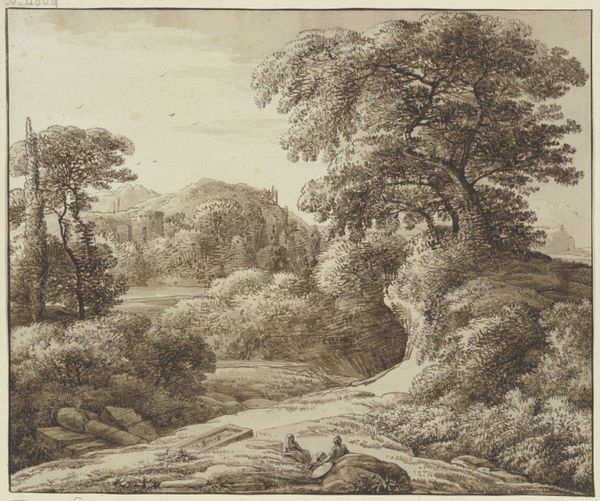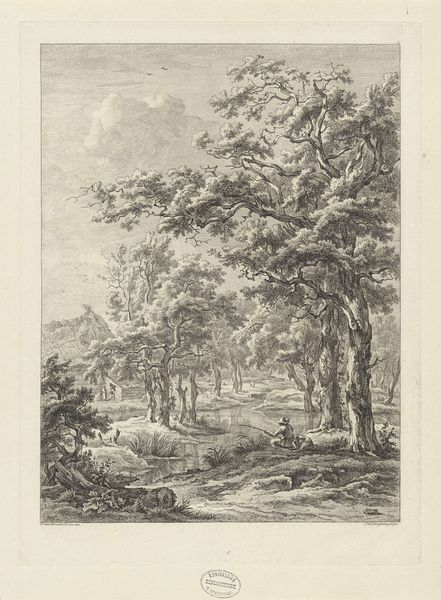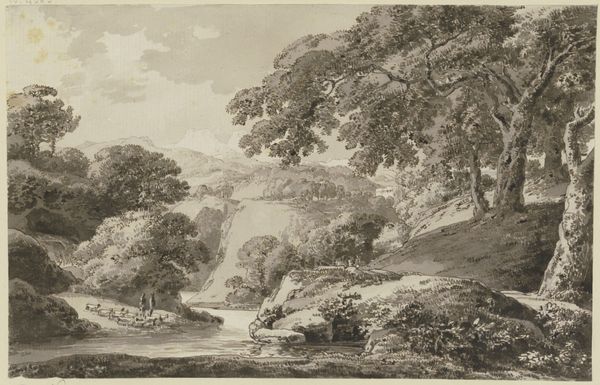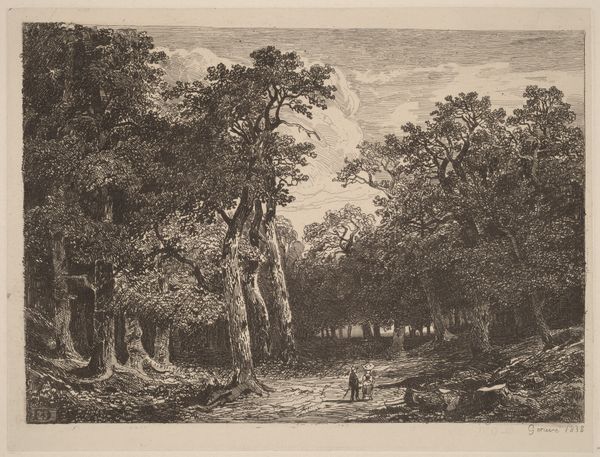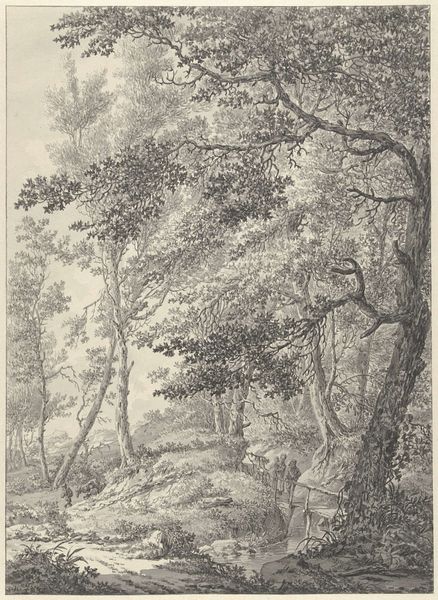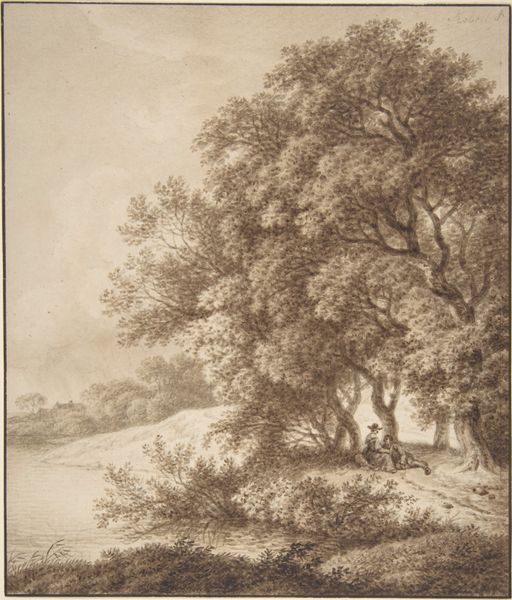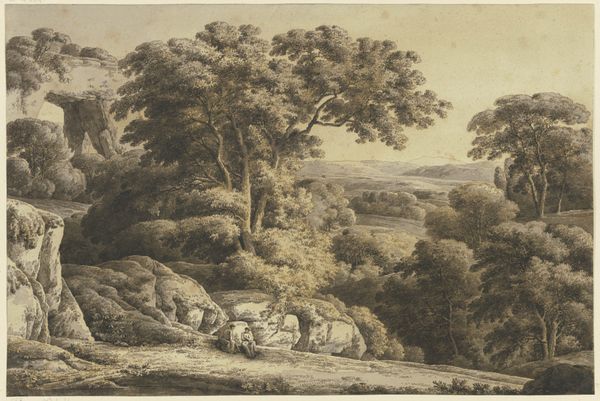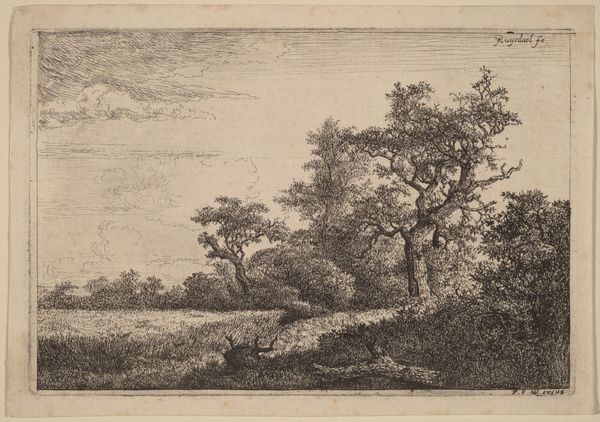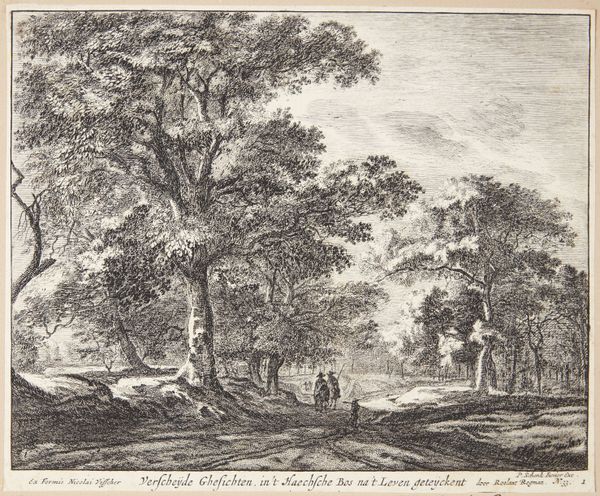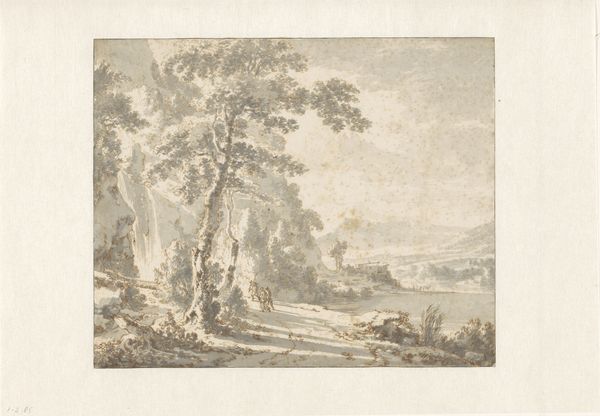
drawing, print, etching
#
drawing
#
ink painting
# print
#
etching
#
landscape
#
etching
#
pencil drawing
#
romanticism
#
realism
Dimensions: sheet: 36.5 x 30.8 cm (14 3/8 x 12 1/8 in.)
Copyright: National Gallery of Art: CC0 1.0
Editor: So this is "An Oak Forest with a Family of Travelers," an etching from around 1820. The forest scene feels both inviting and a little bit ominous. I’m wondering, what symbolic meaning might this scene have held for viewers at the time? Curator: That’s a perceptive starting point. Consider the oak itself: across many cultures, it represents strength, endurance, and even wisdom. Its presence here suggests a grounding, a rootedness. Now, think about the travelers – what does the act of journeying often symbolize? Editor: A search for something... a new life, maybe? Curator: Exactly. But it can also signify pilgrimage, spiritual growth, or even exile. The family braving the water adds another layer. Water is often used as a metaphor. What could that imply? Editor: Baptism or cleansing? Facing fears, perhaps? There is an implied vulnerability in the image that comes with traversing through a river. Curator: Precisely. The Romantics, especially, were fascinated by humanity’s relationship with nature – the sublime, the terrifying, the comforting. How do you think the artist is trying to capture or negotiate those ideas? Editor: Perhaps that although nature can be intimidating, even sublime, it can offer solace, guidance and opportunities for new beginnings? The travelers almost seem hopeful, in spite of the looming forest. Curator: That's insightful. Visual symbols connect to deeper cultural memory, shaping how we understand ourselves in the world. Editor: That makes me think about how contemporary artists use familiar imagery to convey their ideas to their audience. Thanks; I definitely have a deeper appreciation for what's going on here. Curator: My pleasure. Symbols evolve and shift meanings, but their impact still reverberates across time.
Comments
No comments
Be the first to comment and join the conversation on the ultimate creative platform.
